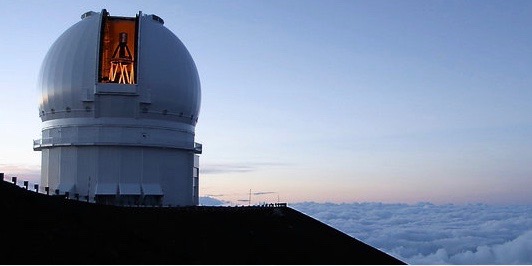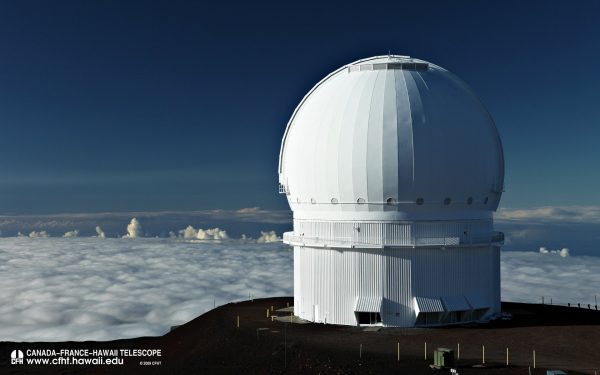First light in lab for SPIRou

SPIRou is a near infra red instrument mainly designed to detect exoplanets by measuring radial velocities of M dwarf stars and to study star and planet formation measuring the magnetic fields of these objects. It is led by France with participation of members of PlanetS.

SPIRou will be installed in the Canada-France-Hawaii Telescope on Mauna Kea. (Image CFHT)
SPIRou (Spectro Polarimètre Infra Rouge) is a near infra red spectropolarimeter/velocimeter proposed as a new-generation CFHT (Canada-France-Hawaï Telescope) instrument. Designed in 2010, SPIRou is a project led by France with the participation of Switzerland through PlanetS and has two main objectives.
The first one is to search and characterize habitable exo-Earths orbiting low-mass and very-low mass stars using high-precision radial velocity (RV) measurements. A stability of 1 m/s is thus mandatory for detecting habitable Earth-like planets around mid and late M dwarfs.
The second main goal is to explore the impact of a magnetic field on star and planet formation, by detecting fields of various types of young stellar objects (e.g. class-I, II and III protostars, young FUor like protostellar accretion discs) and by characterizing their large-scale topologies.
For such observations, a high spectral resolution (typically 75,000), a reasonably high S/N ratio (typically 100 in the JHK bands), and of course access to polarization information in line profiles is required. This information, especially the circular polarization, is indispensable to detect Zeeman signatures to probe magnetic fields with enough precision on their strengths and shapes. Our knowledge of protostars’ magnetic fields and their accretion discs is however still rudimentary. We know that magnetic fields play a central role throughout stellar formation. Magnetic fields in discs are potentially important since these fields are expected to impact significantly the formation, disc-induced migration, and orbital inclination of protoplanets.
Aside the hunt for habitable exo-Earths around low mass dwarfs and the investigation of magnetized star or planet formation, other numerous exciting science programs exist for SPIRou: We like to name dynamo processes in fully convective dwarfs, weather patterns on brown dwarfs, atmospheres of solar system planets, and stellar archeology in the Milky Way.
One week after starting the cooling cycle, the spectrograph bench, optics, and test H2RG detector reached the designed temperature of 85 K. This allowed the team to collect the first lab images. SPIRou will be installed this year on the CFHT and should be operational by the end of 2017.
Categories: External Newsletter, News
